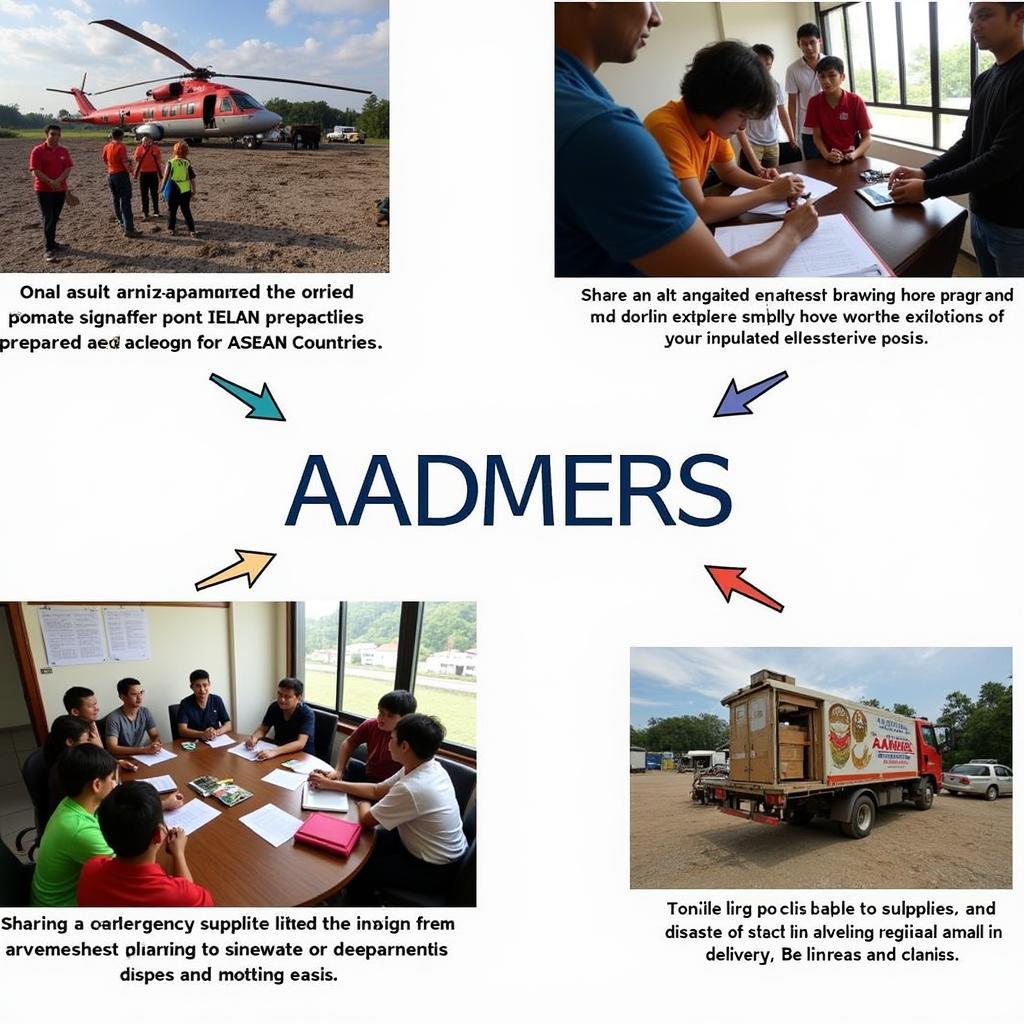The ASEAN Agreement on Disaster Management and Emergency Response (AADMERS) is a landmark agreement that signifies the region’s commitment to collaborative disaster management. It provides a framework for ASEAN member states to work together in preparing for, responding to, and mitigating the impacts of disasters. This article delves into the significance of AADMERS and its role in fostering a more resilient Southeast Asia.
ASEAN, a region prone to natural disasters like typhoons, earthquakes, and tsunamis, recognized the critical need for a unified approach to disaster management. AADMERS, signed in 2005, serves as that unifying force, facilitating cooperation and coordination among member states. The agreement acknowledges that disasters transcend national borders and necessitate a collective response. It emphasizes the importance of sharing information, resources, and expertise to effectively manage disaster risks and impacts. The AADMERS framework seeks to minimize loss of life, alleviate suffering, and reduce economic damage caused by disasters in the region.
Understanding the Importance of the ASEAN Agreement on Disaster Management and Emergency Response
AADMERS is not just a document; it represents a shift in mindset. It promotes a proactive approach to disaster management, focusing on preparedness and prevention rather than solely on response. The agreement encourages the development of national disaster management plans that are aligned with regional strategies. It establishes mechanisms for joint training exercises, information sharing, and the mobilization of resources during emergencies. ASEAN Agreement on Disaster Management and Emergency Response is vital for regional stability and development.
Key Components of AADMERS
AADMERS outlines several key areas of cooperation:
- Early Warning Systems: Sharing information and establishing regional early warning systems are crucial for timely disaster preparedness.
- Emergency Response: The agreement establishes protocols for rapid response and assistance during disasters, including the deployment of search and rescue teams and medical personnel.
- Capacity Building: AADMERS emphasizes the importance of enhancing the capacity of member states to manage disasters through training, technology transfer, and knowledge sharing.
- Resource Mobilization: It provides a framework for mobilizing and coordinating resources, including financial aid, equipment, and personnel, to support affected countries.
- Post-Disaster Recovery: AADMERS also addresses the long-term recovery and rehabilitation process following disasters, focusing on rebuilding infrastructure and restoring livelihoods.
What is the ASEAN Agreement on Disaster Management and Emergency Response (AADMERS)?
AADMERS is a legally binding regional agreement that provides a comprehensive framework for cooperation among ASEAN member states on disaster management and emergency response.
What are the benefits of AADMERS?
AADMERS fosters regional solidarity, enhances disaster preparedness, and strengthens the region’s ability to cope with the devastating effects of natural hazards.
How does AADMERS contribute to regional resilience?
By promoting cooperation, information sharing, and capacity building, AADMERS strengthens the resilience of ASEAN member states to disasters.
 AADMERS Strengthening Regional Resilience
AADMERS Strengthening Regional Resilience
AADMERS in Action: Case Studies and Success Stories
AADMERS has been instrumental in coordinating regional responses to several major disasters. For instance, following the 2004 Indian Ocean tsunami, AADMERS facilitated the rapid deployment of search and rescue teams and the provision of humanitarian assistance to affected countries. The agreement has also been activated during other significant events, such as typhoons and earthquakes, demonstrating its effectiveness in coordinating regional cooperation. AADMER ASEAN has been proven crucial during crisis.
“AADMERS is not merely a document; it is a living testament to the power of regional cooperation. It has transformed the way ASEAN responds to disasters, saving countless lives and mitigating suffering,” says Dr. Siti Maryam, a leading disaster management expert in the region.
ASE Handling EKCH can be improved with the help of AADMERS.
The Future of AADMERS: Challenges and Opportunities
While AADMERS has achieved significant progress, challenges remain. These include the need for greater resource mobilization, improved coordination mechanisms, and enhanced capacity building, particularly in less developed member states. However, AADMERS also presents opportunities for further strengthening regional cooperation. This could involve exploring new technologies for disaster monitoring and early warning, enhancing public awareness campaigns, and engaging with international partners to leverage resources and expertise.
“The future of disaster management in ASEAN lies in continued collaboration and innovation. AADMERS provides the foundation for building a more resilient and disaster-prepared region,” states Mr. Anwar Ibrahim, a prominent regional policy analyst.
ASE Guideline Reference E-Book contains more information on the topic.
In conclusion, the ASEAN Agreement on Disaster Management and Emergency Response (AADMERS) is a vital instrument for regional cooperation and resilience. It has played a crucial role in enhancing the region’s capacity to prepare for, respond to, and recover from disasters. By fostering collaboration and information sharing, AADMERS has contributed significantly to reducing the impact of disasters on the lives and livelihoods of people in Southeast Asia. As the region faces increasing risks from natural hazards, AADMERS will continue to serve as a cornerstone of regional resilience.
FAQ
- What is the main objective of AADMERS? The main objective is to enhance regional cooperation in disaster management and emergency response.
- When was AADMERS established? It was signed in 2005.
- Who are the members of AADMERS? The members are the ASEAN member states.
- What are some examples of disasters covered by AADMERS? Examples include typhoons, earthquakes, tsunamis, floods, and volcanic eruptions.
- How does AADMERS facilitate information sharing? It establishes mechanisms for sharing information on disaster risks, early warnings, and response efforts.
- How can I learn more about AADMERS? You can find more information on the official ASEAN website and other resources.
- What are the key challenges facing AADMERS? Key challenges include resource mobilization, coordination, and capacity building, particularly in less-developed member states.
Need support? Contact us 24/7: Phone: 0369020373, Email: [email protected], or visit us at: Thon Ngoc Lien, Hiep Hoa, Bac Giang, Vietnam.
